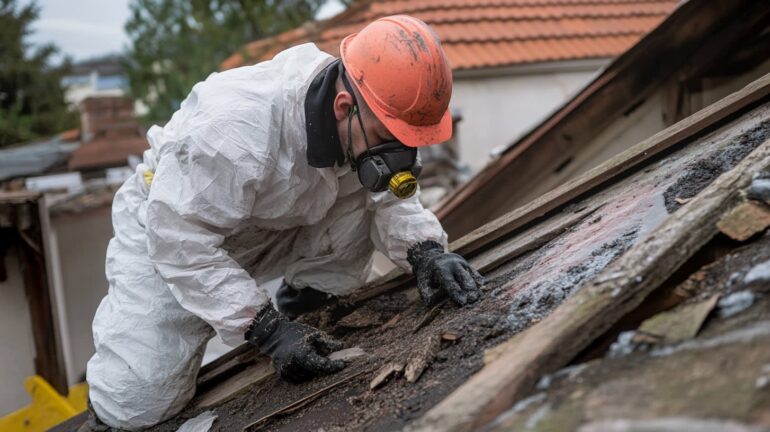Maintaining a safe and healthy environment in residential and commercial properties is one of the most important responsibilities for property owners, facility managers, and construction professionals. Among the hidden risks in many older buildings is asbestos, a material once widely used in construction for its durability, fire resistance, and insulating properties. Despite its past popularity, asbestos is now recognized as a serious health hazard. Inhaling asbestos fibers can lead to severe respiratory diseases, including asbestosis, lung cancer, and mesothelioma. Reliable asbestos testing is essential for identifying potential risks, preventing exposure, and protecting the health of occupants and workers.
What Is Asbestos Testing and Why Is It Necessary?
Asbestos testing is a professional process that involves examining building materials to determine whether they contain asbestos. The testing typically includes collecting small samples from suspected materials, analyzing them in a laboratory, and providing a detailed report that identifies the presence, type, and condition of asbestos.
Testing is necessary because asbestos-containing materials are often hidden and may appear harmless. Without testing, these materials can be accidentally disturbed during renovations, maintenance, or demolition, releasing microscopic fibers into the air. Early detection through testing ensures that hazards are managed safely, preventing exposure and creating a safer environment for occupants.
When Should Asbestos Testing Be Conducted?
Asbestos testing is particularly important in buildings constructed before the late 1980s when asbestos use was widespread. Even properties that appear well-maintained may have asbestos in ceilings, walls, floors, roofing, insulation, or pipe coverings.
Testing should always be conducted before any renovation, refurbishment, or demolition work. Disturbing asbestos-containing materials without prior testing can release fibers, posing serious health risks. In addition, periodic testing may be necessary in properties where asbestos-containing materials are present but remain undisturbed. Over time, deterioration can increase the risk of fiber release, making regular testing an important part of ongoing property management.
What Are the Methods of Asbestos Testing?
Asbestos testing can be performed using several methods depending on the type of material and the level of detail required. The most common method involves collecting samples of suspected materials and sending them to an accredited laboratory for analysis. Laboratory techniques such as polarized light microscopy or transmission electron microscopy provide accurate identification of asbestos fibers.
Airborne asbestos testing is also widely used. This method measures the concentration of asbestos fibers in the air to determine whether materials are deteriorating or if fibers have been released. Air sampling is particularly important in buildings with aging materials or where renovation work is planned. By combining material testing and air monitoring, property owners gain a complete understanding of asbestos-related risks and can take the necessary steps to protect occupants.
How Does Asbestos Testing Protect Health and Safety?
The main objective of asbestos testing is to safeguard the health and safety of occupants, workers, and visitors. Asbestos fibers are microscopic and can remain airborne for long periods when materials are disturbed. Inhalation of these fibers can cause serious, long-term health problems that may not appear until years after exposure.
Testing allows property owners to identify hazardous materials and take appropriate measures to prevent exposure. Depending on the findings, materials may be removed, sealed, or encapsulated. Protective measures such as containment zones, personal protective equipment, and specialized removal procedures further reduce the risk of exposure, ensuring a safe environment for all building users.
What Are the Legal and Compliance Benefits of Asbestos Testing?
Compliance with asbestos regulations is a critical aspect of property management. Many countries have laws requiring property owners and employers to assess and manage asbestos in buildings. Failure to comply can result in fines, legal liability, and serious health risks for occupants.
Reliable asbestos testing provides documented evidence that a building has been professionally assessed. Test reports detail the type, location, and condition of asbestos-containing materials and provide recommendations for management or removal. This documentation is essential for demonstrating compliance with health and safety regulations and supports responsible property management practices.
How Does Asbestos Testing Support Safe Renovation and Maintenance Work?
Renovation and maintenance work often involves activities that can disturb asbestos-containing materials, such as cutting, drilling, or demolishing walls, floors, ceilings, or insulation. Without proper testing, these activities can release hazardous fibers into the air.
Accurate asbestos testing allows contractors and property owners to identify potentially hazardous materials before work begins and implement safety measures to prevent exposure. Measures may include isolating work areas, using protective equipment, establishing containment zones, and following specialized removal protocols. Testing ensures that renovation and maintenance work can proceed safely without endangering occupants or workers.
Why Is Professional Expertise Important for Asbestos Testing?
Professional expertise is essential for reliable asbestos testing. Certified professionals have the knowledge and experience needed to identify potential asbestos-containing materials, collect samples safely, and interpret laboratory results accurately. They follow strict safety protocols to prevent the release of fibers during the inspection and sampling process.
Attempting asbestos testing without professional expertise can be extremely dangerous. Improper handling of materials can release fibers, exposing occupants and workers to serious health risks. Engaging certified testing professionals guarantees accurate results while maintaining safety throughout the process.
What Are the Steps Involved in Reliable Asbestos Testing?
A typical asbestos testing procedure begins with a visual inspection of the property to identify materials that may contain asbestos. Inspectors examine ceilings, walls, floors, insulation, roofing, and pipework to determine which materials require sampling.
Samples are collected carefully, following strict safety protocols to prevent fiber release. These samples are then sent to an accredited laboratory for analysis. Laboratory testing confirms whether asbestos is present, identifies the type, and assesses the condition of the materials.
After analysis, a detailed report is prepared. The report includes the location, type, and condition of asbestos-containing materials, as well as recommendations for removal, encapsulation, or ongoing monitoring. This report serves as a comprehensive guide for managing asbestos safely in the property.
How Does Asbestos Testing Enhance Long-Term Property Safety?
Reliable asbestos testing supports long-term safety by establishing a clear understanding of potential hazards. Once asbestos-containing materials are identified, property owners can develop management plans that include monitoring, removal, or encapsulation.
Regular testing may be required for materials that remain in place, ensuring that they remain in good condition and do not pose a risk over time. Accurate records of testing and management activities provide ongoing compliance and reassurance that the property remains safe for occupants and workers.
What Are the Financial Benefits of Early Asbestos Detection?
While asbestos testing involves an initial investment, it can prevent much larger expenses in the future. Discovering asbestos unexpectedly during renovation or maintenance work can result in project delays, emergency removal costs, and potential legal liabilities. Early detection allows property owners to plan for safe removal or management, minimizing financial risk and avoiding costly surprises.
Properties with documented asbestos testing are also more attractive to tenants, buyers, and investors. Demonstrating a commitment to safety and regulatory compliance enhances property value and marketability, making testing a wise long-term investment.
How Can Property Owners Maximize the Benefits of Asbestos Testing?
To maximize the benefits of asbestos testing, property owners should engage certified professionals and schedule inspections well before renovation or maintenance work begins. Carefully reviewing the test report and implementing all recommended actions is essential for safety and compliance.
Maintaining thorough records of testing, removal, or management activities ensures long-term protection. Communicating test results to contractors, tenants, and occupants raises awareness and reinforces safe practices throughout the property.
How Does Early Detection of Asbestos Prevent Health Hazards?
Early detection of asbestos through reliable testing prevents health hazards by identifying hidden risks before they can cause harm. Once asbestos-containing materials are identified, property owners can implement strategies for safe removal, encapsulation, or monitoring.
This proactive approach reduces the likelihood of fiber release, preventing exposure to serious health risks. Occupants, workers, and visitors can confidently use the building, knowing that it has been professionally assessed and managed.
Conclusion
Reliable asbestos testing is essential for preventing exposure and protecting health. Accurate testing identifies the presence, type, and condition of asbestos-containing materials, enabling property owners to take informed actions for removal, encapsulation, or monitoring.
Professional testing ensures precise results, regulatory compliance, and reduced risk of exposure. Early detection prevents serious health hazards, supports safe renovation and maintenance work, and contributes to long-term property safety.
By investing in reliable asbestos testing, property owners demonstrate a commitment to occupant health, regulatory compliance, and responsible property management. Proactive asbestos management ensures that properties remain safe, healthy, and secure for all occupants while protecting property value and minimizing future risks.






